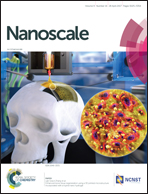Multifrequency AFM: from origins to convergence†
Abstract
Since the inception of the atomic force microscope (AFM) in 1986, influential papers have been presented by the community and tremendous advances have been reported. Being able to routinely image conductive and non-conductive surfaces in air, liquid and vacuum environments with nanoscale, and sometimes atomic, resolution, the AFM has long been perceived by many as the instrument to unlock the nanoscale. From exploiting a basic form of Hooke's law to interpret AFM data to interpreting a seeming zoo of maps in the more advanced multifrequency methods however, an inflection point has been reached. Here, we discuss this evolution, from the fundamental dilemmas that arose in the beginning, to the exploitation of computer sciences, from machine learning to big data, hoping to guide the newcomer and inspire the experimenter.



 Please wait while we load your content...
Please wait while we load your content...